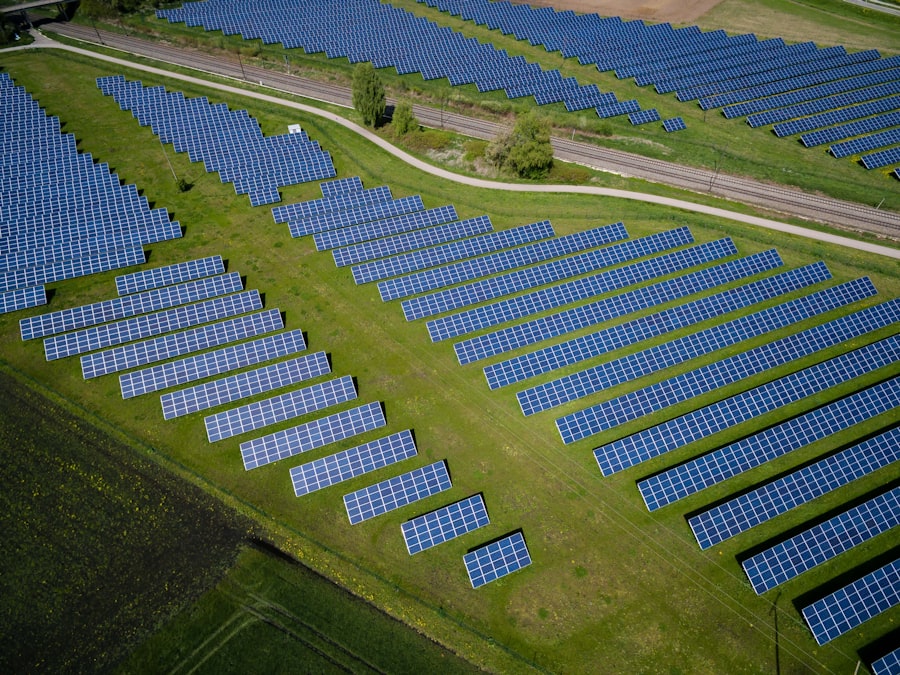Green bonds are a specific category of fixed-income securities designed to fund projects that have positive environmental impacts. These bonds are issued by various entities, including governments, municipalities, and corporations, with the explicit purpose of raising capital for initiatives that contribute to sustainability. The projects financed through green bonds typically focus on renewable energy, energy efficiency, clean transportation, sustainable water management, and other environmentally friendly ventures.
The concept of green bonds emerged in the early 2000s, gaining significant traction as awareness of climate change and environmental degradation increased. The defining characteristic of green bonds is their commitment to transparency and accountability regarding the use of proceeds. Issuers are often required to provide detailed reports on how the funds are allocated and the environmental benefits achieved.
This commitment to transparency not only builds trust among investors but also encourages issuers to adhere to high standards of environmental responsibility. As a result, green bonds have become an essential tool in the global effort to finance the transition to a low-carbon economy.
How do Green Bonds work?
Green bonds operate similarly to traditional bonds in that they involve an issuer borrowing money from investors with a promise to pay back the principal amount along with interest over a specified period. However, the key distinction lies in the use of the proceeds. When an investor purchases a green bond, they are essentially lending money to the issuer for the purpose of funding environmentally beneficial projects.
The issuer then commits to using the funds exclusively for these green initiatives, which can range from solar energy installations to sustainable agriculture practices. The process begins with an issuer identifying a project that qualifies as “green” under established guidelines, such as the Green Bond Principles (GBP) or the Climate Bonds Standard. Once a project is identified, the issuer prepares a bond offering that outlines the project’s objectives, expected environmental benefits, and how the funds will be managed.
After issuing the bond, the issuer is responsible for reporting on the project’s progress and its environmental impact, ensuring that investors can track how their money is being utilized. This level of accountability is crucial for maintaining investor confidence and promoting further investment in green initiatives.
Benefits of Investing in Green Bonds

Investing in green bonds offers several advantages that appeal to both individual and institutional investors. One of the primary benefits is the alignment with ethical and sustainable investment goals. As more investors seek to incorporate environmental, social, and governance (ESG) criteria into their portfolios, green bonds provide a tangible way to support projects that contribute positively to society and the environment.
This alignment can enhance an investor’s reputation and fulfill corporate social responsibility objectives. Additionally, green bonds can offer competitive financial returns. While some investors may assume that sustainable investments yield lower returns due to perceived risks or higher costs, many green bonds have demonstrated performance on par with or even exceeding traditional bonds.
The growing demand for green investments has led to increased liquidity in this market segment, which can further enhance returns. Furthermore, as governments and corporations increasingly prioritize sustainability, the market for green bonds is expected to expand, potentially leading to capital appreciation over time.
Risks of Investing in Green Bonds
| Category | Risks |
|---|---|
| Interest Rate Risk | Fluctuations in interest rates can affect the value of green bonds. |
| Issuer Risk | There is a risk of default by the issuer of the green bonds. |
| Liquidity Risk | Green bonds may be less liquid than traditional bonds, making them harder to sell. |
| Regulatory Risk | Changes in regulations or policies can impact the value of green bonds. |
| Market Risk | General market conditions can affect the performance of green bonds. |
Despite their many advantages, investing in green bonds is not without risks. One significant concern is the potential for “greenwashing,” where issuers may exaggerate or misrepresent the environmental benefits of their projects. This can lead to a situation where investors unknowingly support initiatives that do not deliver on their promised sustainability outcomes.
To mitigate this risk, investors should conduct thorough due diligence and consider investing in bonds that adhere to recognized standards and certifications. Another risk associated with green bonds is market volatility. Like all fixed-income securities, green bonds are subject to interest rate fluctuations and changes in market conditions.
If interest rates rise, the value of existing bonds may decline, impacting an investor’s returns. Additionally, specific sectors within the green bond market may face unique challenges; for instance, renewable energy projects can be affected by regulatory changes or technological advancements that alter their economic viability. Investors must remain vigilant and informed about these dynamics when considering green bond investments.
Performance of Green Bonds in the Market
The performance of green bonds has garnered significant attention from both investors and analysts in recent years. Research indicates that green bonds have performed competitively compared to traditional fixed-income securities. A report from the Climate Bonds Initiative highlighted that green bonds often exhibit lower yield spreads compared to conventional bonds issued by the same entities, reflecting strong demand and investor confidence in sustainable investments.
Moreover, during periods of market stress, such as economic downturns or geopolitical tensions, green bonds have shown resilience. For instance, during the COVID-19 pandemic, many green bonds maintained their value better than traditional bonds as investors sought safe-haven assets aligned with their values. This trend suggests that green bonds may not only serve as a means of supporting environmental initiatives but also as a strategic component of a diversified investment portfolio.
How to Invest in Green Bonds

Investing in green bonds can be approached through various channels depending on an investor’s preferences and resources. Individual investors can purchase green bonds directly through brokerage accounts or invest in mutual funds or exchange-traded funds (ETFs) that focus on sustainable fixed-income securities. These funds typically hold a diversified portfolio of green bonds, providing exposure to multiple projects while mitigating individual bond risk.
Institutional investors often have access to larger-scale offerings and may participate in private placements or direct issuances from governments or corporations. Many financial institutions now offer dedicated green bond funds or sustainability-focused investment products that allow institutional clients to align their portfolios with ESG criteria effectively. Additionally, platforms such as the International Finance Corporation (IFC) provide opportunities for impact investing in emerging markets through green bond issuances.
Case Studies of Successful Green Bond Investments
Several notable case studies illustrate the successful implementation and impact of green bond investments across various sectors. One prominent example is the issuance of green bonds by the European Investment Bank (EIB), which has been a pioneer in this space since 2007. The EIB’s Climate Awareness Bonds have funded numerous renewable energy projects across Europe, including wind farms and solar energy installations.
These projects not only contribute to reducing greenhouse gas emissions but also create jobs and stimulate local economies. Another compelling case is the City of New York’s issuance of green bonds to finance its ambitious sustainability initiatives aimed at reducing carbon emissions by 80% by 2050. The proceeds from these bonds have been allocated to various projects, including energy-efficient building retrofits and sustainable transportation infrastructure improvements.
The success of New York’s green bond program has inspired other cities worldwide to adopt similar financing strategies for their sustainability goals.
Is Investing in Green Bonds Worth It?
Investing in green bonds presents a unique opportunity for individuals and institutions alike to contribute positively to environmental sustainability while potentially achieving competitive financial returns. The growing demand for sustainable investments reflects a broader societal shift towards prioritizing environmental responsibility in financial decision-making. While there are inherent risks associated with this investment class, diligent research and adherence to established standards can help mitigate these concerns.
As global efforts to combat climate change intensify, the market for green bonds is poised for continued growth. Investors who align their portfolios with sustainable practices not only support critical environmental initiatives but also position themselves strategically within an evolving financial landscape that increasingly values sustainability. Ultimately, whether investing in green bonds is worth it depends on individual investment goals and risk tolerance; however, the potential benefits make them an attractive option for many looking to make a positive impact while pursuing financial returns.
FAQs
What are green bonds?
Green bonds are a type of fixed-income financial instrument that are specifically earmarked to raise money for projects with environmental benefits. These projects can include renewable energy, energy efficiency, pollution prevention, and other environmentally friendly initiatives.
How do green bonds work?
Green bonds work similarly to traditional bonds, where investors lend money to an issuer in exchange for periodic interest payments and the return of the initial investment at the bond’s maturity. The key difference is that the proceeds from green bonds are exclusively used to fund environmentally friendly projects.
Are green bonds worth investing in?
Investing in green bonds can be worth it for investors who are looking to support environmentally friendly projects while also earning a financial return. Green bonds can diversify an investment portfolio and align with the values of socially responsible investors.
What are the benefits of investing in green bonds?
Investing in green bonds can provide several benefits, including the potential for financial returns, diversification of investment portfolios, and the satisfaction of supporting environmentally beneficial projects. Additionally, some green bonds may offer tax incentives or other financial advantages.
What are the risks of investing in green bonds?
As with any investment, green bonds carry certain risks, such as interest rate risk, credit risk, and liquidity risk. Additionally, the success of the environmental projects funded by green bonds can impact the financial performance of the investment. It’s important for investors to carefully evaluate the issuer and the specific terms of the green bond before investing.




